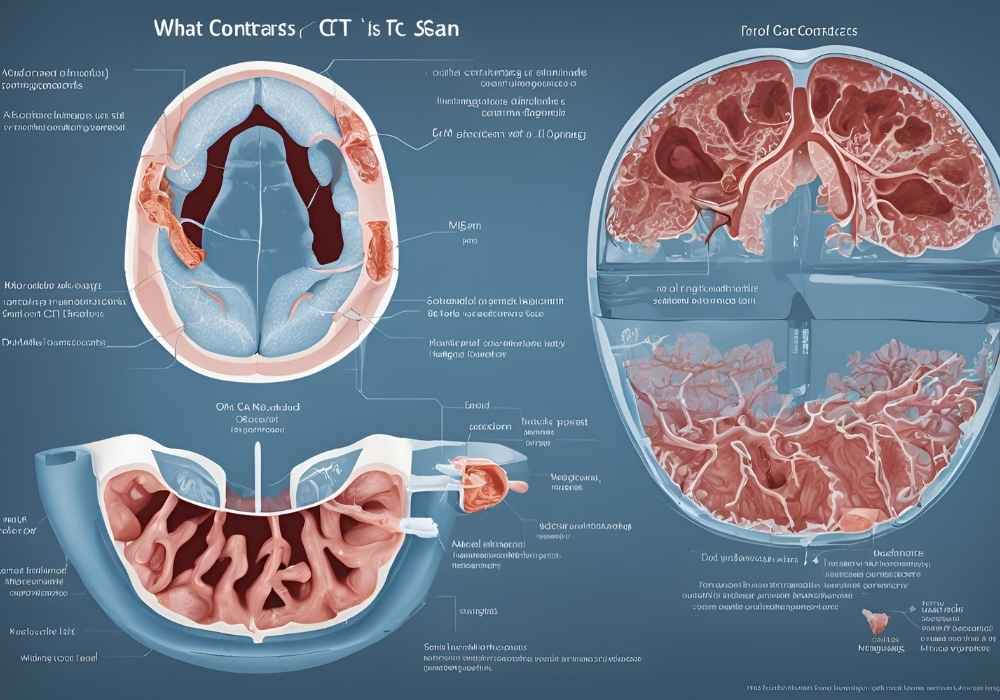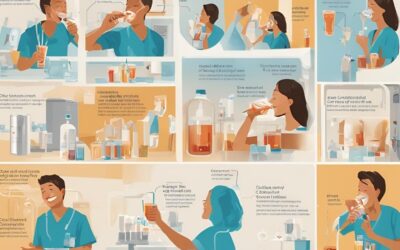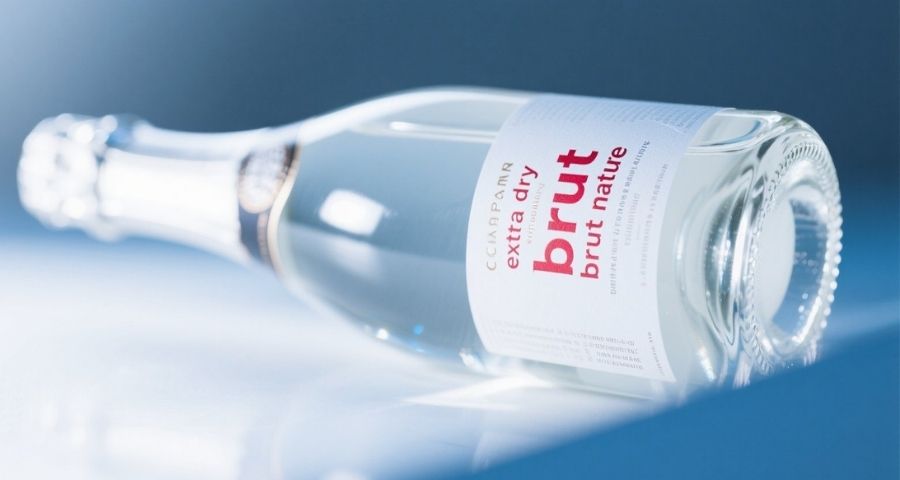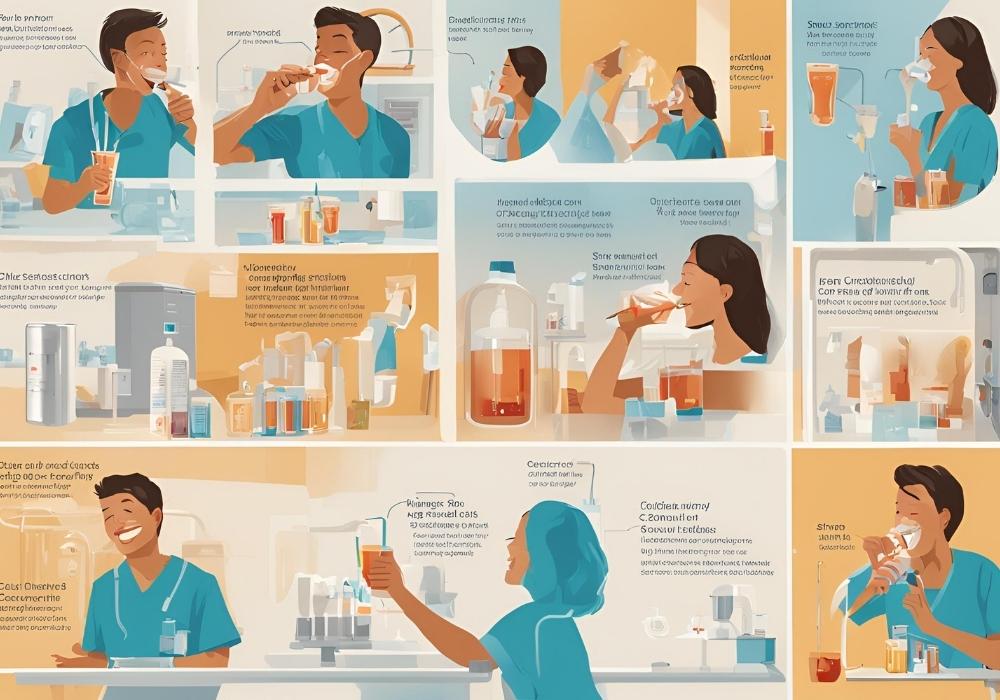CT scans are essential diagnostic tools, providing detailed images of your body to help doctors identify and treat various conditions. If your doctor has ordered a CT scan with oral contrast, you might feel unsure about what this entails. Don’t worry—you’re not alone!
This guide explains everything you need to know about drinking oral contrast for a CT scan. Whether you’re a patient preparing for your scan, a health-conscious individual, or a medical professional seeking a clear resource for patients, these tips will help you understand the process and make the experience as smooth as possible.
What Is Oral Contrast for a CT Scan?

Oral contrast is a liquid substance you consume before a CT scan. It contains a material that enhances imaging, making it easier for radiologists to see your digestive tract and other structures within your abdomen and pelvis.
Most oral contrasts are iodine-based or barium sulfate solutions, both safe and effective. They work by temporarily coating the lining of your GI tract, allowing it to stand out more clearly on the scan. This helps doctors detect abnormalities such as blockages, inflammation, or growth.
Why Is Oral Contrast Necessary?
Your CT scan’s effectiveness relies heavily on image clarity. Drinking oral contrast allows the radiologist to differentiate between organs, tissues, and abnormalities precisely.
For instance, oral contrast helps highlight the walls of your intestines, making it easier to detect conditions like Crohn’s disease, colorectal cancer, or appendicitis. It also improves the visualization of your stomach, small intestines, and colon.
Without oral contrast, these areas might appear less distinct on the scan, making it harder for your care team to diagnose accurately.
How to Prepare for Drinking Oral Contrast

Proper preparation makes a significant difference in your experience. Follow these steps to ensure everything goes smoothly.
1. Read Your Instructions Carefully
Your healthcare provider will give specific instructions about when and how to take your oral contrast. Usually, you’ll be asked to drink the solution at scheduled intervals leading up to your scan.
Stick to the timing provided—this ensures the contrast has enough time to work its magic before the scan.
2. Don’t Drink Without Guidance
While oral contrast is safe, don’t drink it without your doctor’s instructions. They’ll account for your medical history and ensure the process is safe.
3. Avoid Eating Beforehand
You may be advised to avoid eating for a few hours before the scan. An empty stomach helps the oral contrast work better, making your CT images clearer.
Ask your doctor how long you should fast before consuming oral contrast—usually 4–6 hours.
4. Talk About Allergies or Sensitivities
If you’ve experienced allergies to iodine or barium sulfate in the past, or if you have a known contrast allergy, be sure to inform your healthcare provider. They may recommend an alternative preparation or take extra precautions during the scan.
How to Drink Oral Contrast
Most patients find drinking oral contrast manageable, although it might not always be pleasant. Here’s how to make the process easier!
1. Chill the Solution
If your oral contrast isn’t refrigerated, ask your provider if it’s okay to chill it. Many patients find cold contrast easier to drink as it dulls the taste.
2. Break It Into Small Sips
Don’t rush to gulp it all down. Instead, take small, steady sips. This is particularly helpful if you’re not a fan of the taste or texture.
3. Use a Straw
Drinking through a straw may reduce how much of the taste you notice. Plus, it’s a great way to break the task into smaller steps—sipping a little at a time.
4. Keep a Positive Mindset
The taste of oral contrast isn’t universally loved, but reminding yourself why you’re drinking it can help. Focus on how this small inconvenience contributes to your health and well-being.
What to Expect During and After Drinking Oral Contrast
Changes in Taste or Texture
Oral contrast often has a chalky texture or an unfamiliar taste. Some people describe it as metallic or slightly bitter. Rest assured, your healthcare provider uses flavors (like berry or vanilla) to make it as palatable as possible.
Possible Side Effects
Most patients tolerate oral contrast well, but mild side effects like nausea, bloating, or diarrhea are normal. These symptoms usually resolve quickly without intervention.
More severe reactions, such as vomiting, hives, or shortness of breath, can occur rarely. In these situations, notify your healthcare provider or seek immediate medical care.
Duration of the Process
Depending on your provider’s instructions, drinking the oral contrast typically takes 30 minutes to 2 hours before the scan. Once you’ve finished your preparation, the CT scan usually only takes 10–30 minutes.
Hydration Is Key
After your CT scan, drink plenty of water. Hydration helps move the contrast from your system, reducing bloating or digestive discomfort.
Frequently Asked Questions (FAQs)
1. What happens if I can’t finish the oral contrast?
If you’re unable to drink the full amount, inform your healthcare provider immediately. They may adjust the protocol or offer alternative methods to complete the scan.
2. Can I mix the oral contrast with something else?
Always confirm with your doctor before mixing it with anything other than water. Adding a flavored drink or juice is usually discouraged, as it could interfere with the scan.
3. Is oral contrast safe for children or pregnant individuals?
Yes, oral contrast is safe when used appropriately under medical supervision. Based on medical history, pediatric patients or pregnant individuals may receive adjusted doses or alternatives.
4. How long does oral contrast stay in my system?
Most oral contrast will be eliminated through your digestive system in 24–48 hours. Staying hydrated speeds up this process.
Simple Steps Toward a Clear CT Scan
Drinking oral contrast might not be the most enjoyable part of your CT scan experience, but it’s essential for achieving accurate diagnostic images. The process can be relatively stress-free with proper preparation and the tips outlined above.
Remember, your healthcare team is there to help—don’t hesitate to contact them with questions or concerns.
You’re taking an important step toward better health by proactively preparing for your scan and following guidance!



